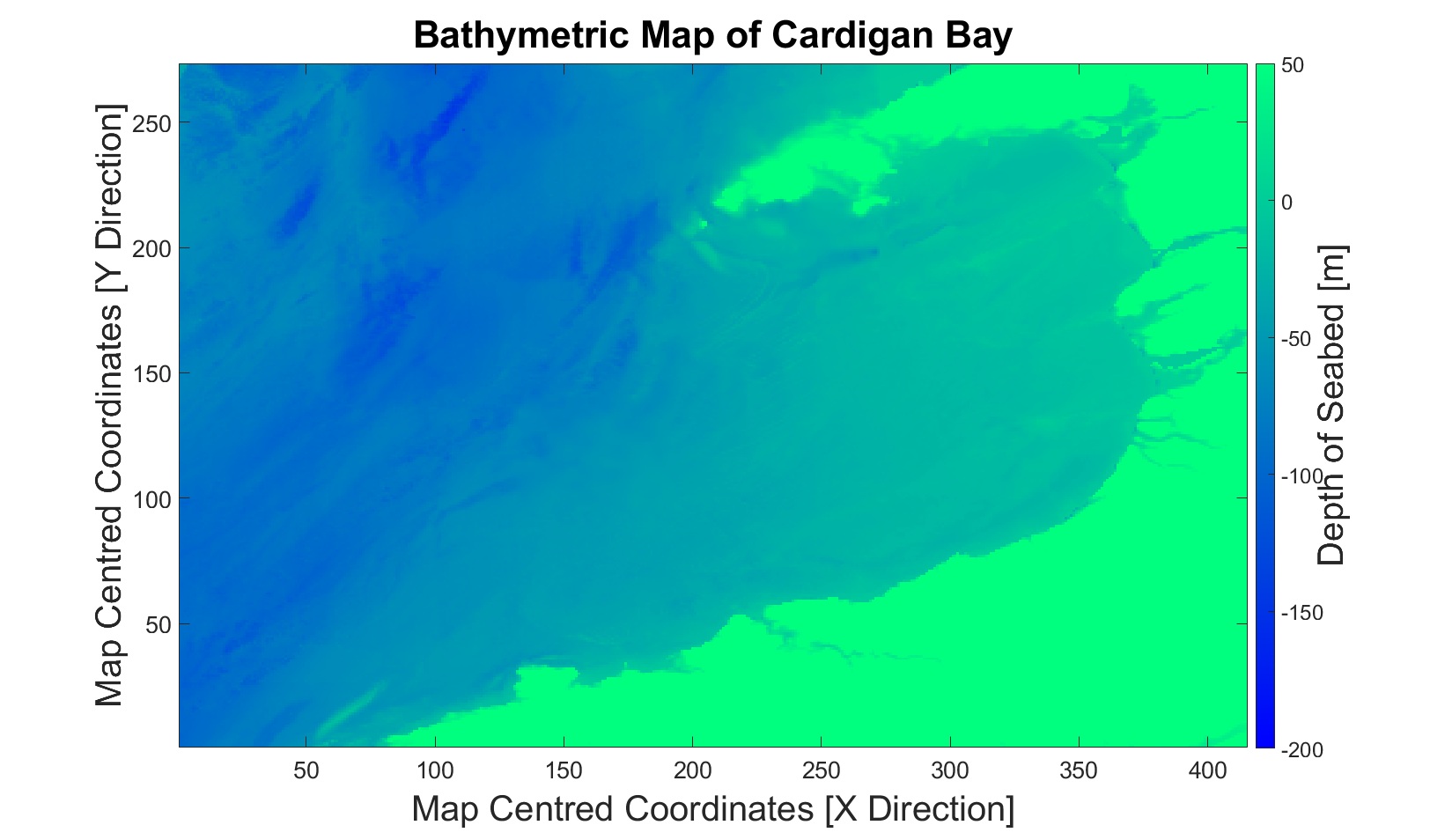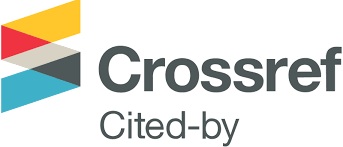Modelling the Sea Surface of Cardigan Bay
DOI:
https://doi.org/10.59973/emjsr.136Keywords:
Wind Waves, Source Functions, Pierson-Moskowitz, JONSWAP, Significant Wave HeightAbstract
The aim of this project was to model the sea surface of Cardigan Bay, to be able to expand upon QinetiQ’s current wave models, used within their radar assurance activities. The sea surface can cause unwanted detections, which is referred to as clutter. The sea is not the only source of clutter such as litter and birds, have an impact on the returns detected by the radar. This project explored two different approaches, modelling the propagation of waves and modelling the distribution of energy across the sea surface. The first approach explored two open source models, WAVEWATCH III and SWAN, and after having technical errors, two real world, existing examples of where these models were implemented were researched. This research showed a lot of promise, and would be worth expanding upon. The second approach looked into two recognised equations for calculating the energy density of the waves, and then calculating the significant wave height. Overall, modelling the propagation of waves would produce more representative results, particularly SWAN which was a model designed for coastal waters, however to set up the wave models fell outside of the scope of this project.
References
https://www.weather.gov/key/marine sigwave
The SWAN Team. SWAN Technical Documentation-Spectral Action Balance Equation, March 2024.
https://byjus.com/physics/wave-number/
Jeffrey L. Hanson, Barbara A. Tracy, Hendrik L. Tolman, and R. Douglas Scott. Pacific hindcast performance of three numerical wave models. Journal of Atmospheric and Oceanic Technology, 26(8):1614 – 1633, 2009. DOI: https://doi.org/10.1175/2009JTECHO650.1
Paul Wessel and Walter H. F. Smith. A global self-consistent, hierarchical, high-resolution, geography Database.
Liu, Q., Rogers, W. E., Babanin, A. V., Young, I. R., Romero, L., Zieger, S., Qiao, F., & Guan, C. (2019). Observation-Based Source Terms in the Third-Generation Wave Model WAVEWATCH III: Updates and Verification. Journal of Physical Oceanography, 49(2), 489-517. DOI: https://doi.org/10.1175/JPO-D-18-0137.1
Hasselmann, S. , and K. Hasselmann. ”Computations and Parameterizations of the Nonlinear Energy Transfer in a Gravity-Wave Spectrum. Part I: A New Method for Efficient Computations of the Exact Nonlinear Transfer Integral”, Journal of Physical Oceanography 15, 11 (1985): 1369-1377 DOI: https://doi.org/10.1175/1520-0485(1985)015<1369:CAPOTN>2.0.CO;2
Johnson, Hakeem K., and Henrik Kofoed-Hansen. ”Influence of Bottom Friction on Sea Surface Roughness and Its Impact on Shallow Water Wind Wave Modeling”, Journal of Physical Oceanography 30, 7 (2000): 1743-1756 DOI: https://doi.org/10.1175/1520-0485(2000)030<1743:IOBFOS>2.0.CO;2
WAMDIG 1988: The WAM model - A third generation ocean wave prediction model. Journal of Physical Oceanography, 18, 1775-1810. DOI: https://doi.org/10.1175/1520-0485(1988)018<1775:TWMTGO>2.0.CO;2
Chawla, A. and H. L. Tolman, 2008: Obstruction grids for wave models. Ocean Modelling, 22, 12-25. DOI: https://doi.org/10.1016/j.ocemod.2008.01.003
https://swanmodel.sourceforge.io/download/zip/swanuse.pdf
Hendrik Tolman. A mosaic approach to wind wave modeling. Ocean Modelling, 25:35–47, 12 2008. DOI: https://doi.org/10.1016/j.ocemod.2008.06.005
Pierson, Willard J. and Lionel Moskowitz. “A proposed spectral form for fully developed wind seas based on the similarity theory of S. A. Kitaigorodskii” (1964). DOI: https://doi.org/10.21236/AD0421610
https://www.northseacore.co.uk/geology
Kathrin Wahle, Joanna Staneva, Wolfgang Koch, Luciana Fenoglio, Ha Ho-Hagemann, and Emil Stanev. An atmosphere–wave regional coupled model: Improving predictions of wave heights and surface winds in the southern north sea. Ocean Science, 13:289–301, 04 2017 DOI: https://doi.org/10.5194/os-13-289-2017
Klaus Hasselmann, T. Barnett, E. Bouws, H. Carlson, D. Cartwright, K Enke, J Ewing, H Gienapp, D. Hasselmann, P. Kruseman, A Meerburg, Peter Muller, Dirk Olbers, K Richter, W. Sell, and H. Walden. Measurements of wind-wave growth and swell decay during the joint north sea wave project (jonswap). Deut. Hydrogr. Z., 8:1–95, 01 1973.
C. L. Bretschneider. Revised wave forecasting relationships. Coastal Engineering Proceedings, 1(2):1, Jan. 1951. DOI: https://doi.org/10.9753/icce.v2.1
Hsu, S. A. , Eric A. Meindl, and David B. Gilhousen. ”Determining the Power-Law Wind-Profile Exponent under Near-Neutral
Stability Conditions at Sea”, Journal of Applied Meteorology and Climatology 33, 6 (1994): 757-765 DOI: https://doi.org/10.1175/1520-0450(1994)033<0757:DTPLWP>2.0.CO;2
Hendrik L. Tolman and the WAVEWATCH III Development Group. User manual and system documentation of wavewatch iii
®version 4.18. Technical note, U. S. Department of Commerce, National Oceanic and Atmospheric Administration, National Weather Service, National Centers for Environmental Prediction, Environmental Modeling Center, Marine Modeling and Analysis Branch, 5830 University Research Court, College Park, MD 20740, March 2014.
Chris Sherwood. Swan example. https://github.com/csherwood-usgs/SWAN example, 2024.
Cameron Beccario. Earth: A visualization of global weather conditions. http://earth.nullschool.net, 2024.
Natural Resources Wales. Cardigan bay/bae ceredigion special area of conservation: Advice provided by natural resources wales in fulfilment of regulation 37 of the conservation of habitats and species regulations 2017, March 2018.
S. A. KITAIGORODSKII. Application of the theory of similarity to the analysis of wind-generated wave motion as a stochastic process. Izv., Geophys. Ser. Acad. Sci., USSR, 1:105–117, 1962
Alexander Callaway, Rory Quinn, Craig J. Brown, Matthew Service, David Long, and Sara Benetti. The formation and evolution of an isolated submarine valley in the north channel, irish sea: an investigation of beaufort’s dyke. Journal of Quaternary Science, 26(4):362–373, 2011 DOI: https://doi.org/10.1002/jqs.1460

Downloads
Published
How to Cite
Issue
Section
License
Copyright (c) 2024 Benjamin Churchill, Rebecca Caves, Chloe Peet, Bill Dawber

This work is licensed under a Creative Commons Attribution 4.0 International License.














